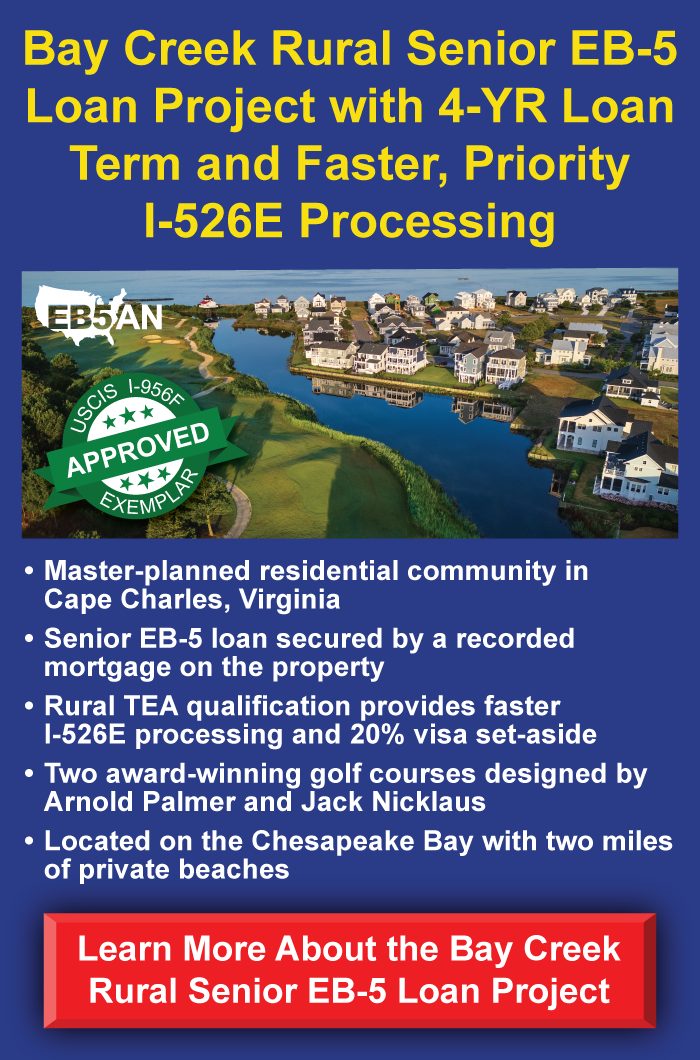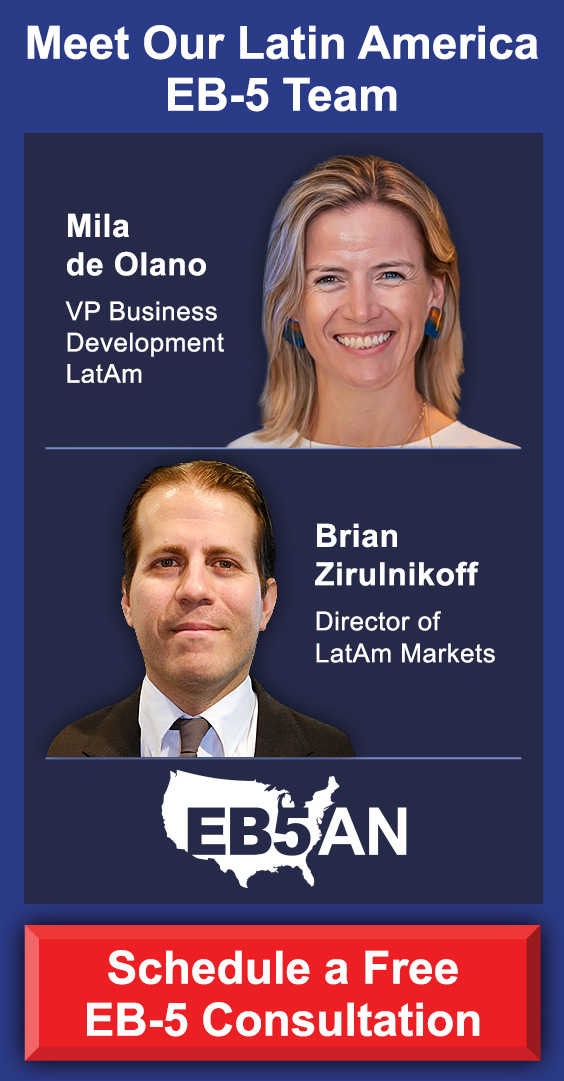The EB-5 Immigrant Investor Program provides a unique path to U.S. permanent residency, offering foreign nationals the opportunity to obtain a Green Card through investment in a U.S.-based new commercial enterprise.
For many international investors considering this route, an important question arises: How does the success of the EB-5 project impact an investor’s visa status?
In this article, we will break down the key components of the EB-5 process, including the job creation requirement, project performance, the sustainment period, and why due diligence is crucial to maximizing the likelihood of success.
Understanding the EB-5 Investment Process
The Role of Job Creation
Does Project Failure Affect My Visa Status?
The Sustainment Period and “At Risk” Rule
Choosing the Right Project: The Importance of Due Diligence
EB5AN Can Help You Maximize Your Chances of Financial and Immigration Success
Understanding the EB-5 Investment Process
To qualify for the EB-5 program, an investor must meet certain criteria.
First, a prospective investor must make a minimum investment of $1,050,000—or $800,000 in a targeted employment area (TEA).
The most critical component of an EB-5 investment is its job creation: The investment must be made in a U.S. new commercial enterprise that creates at least 10 full-time jobs for U.S. workers. This requirement is at the heart of the EB-5 program and plays a key role in determining whether an investor will receive a Green Card.
After an EB-5 investor submits their initial application and get approved, they can apply for and receive a conditional Green Card. This conditional status lasts for two years, after which the investor must apply to remove the conditions on their Green Card by submitting Form I-829, Petition by Investor to Remove Conditions on Permanent Resident Status.
If approved, an investor then becomes an unconditional permanent resident. After five years as a Green Card holder (including the initial two years of conditional residency), investors can apply to become naturalized U.S. citizens.
The Role of Job Creation
As mentioned above, one of the most crucial factors in the EB-5 process is the job creation requirement.
Several types of jobs can qualify depending on your investment. For direct investors, only jobs created directly by the investment count. Regional center investors, however, can also count indirect and induced jobs toward their job-creation total.
When the investor applies to remove the conditions on their Green Card (via the I-829 petition), U.S. Citizenship and Immigration Services (USCIS) will evaluate whether the project has met the job creation requirement.
If the project fails to meet the necessary job creation target, the investor’s petition could be denied, which may lead to the loss of conditional residency and an inability to obtain a full Green Card.
Does Project Failure Affect My Visa Status?
While the success of the project in terms of profits is not directly related to an investor’s Green Card status, failure to meet the job creation requirement is. In other words, while the project’s financial success does not directly determine whether you will gain a Green Card, it does have a significant impact on the likelihood of you meeting the program’s requirements.
For instance, if the project goes bankrupt or fails to create enough jobs, the investor’s eligibility for a permanent Green Card could be jeopardized.
This is why it is essential for EB-5 investors to choose projects that have a clear plan to meet the job creation requirement.
The Sustainment Period and “At Risk” Rule
The sustainment period is another key element of the EB-5 process, one that is often misunderstood.
According to the current regulations, an EB-5 investor’s investment must remain “at risk” for at least two years. Put simply, this means that an investor’s capital must have been clearly transferred to the project and be subject to loss for at least two years.
While investors may be concerned about the potential loss of their capital during this time, the key to maintaining eligibility for a Green Card is fulfilling the job creation requirement, not the profitability of the investment. As long as the project creates and sustains the required jobs, the investor can maintain their conditional Green Card status, even if the project does not generate a return on investment.
While certain safeguards can be put in place to protect an investor’s funds, if the project fails to keep the investment at risk (such as through early repayment of the investment or other actions that reduce the risk for the investor), it could jeopardize an investor’s Green Card process. In such cases, working with a regional center that prioritizes honest redeployment of investor funds is key.
Choosing the Right Project: The Importance of Due Diligence
While financial success is not a requirement of the EB-5 program, selecting a strong and stable project significantly improves investors’ chances of obtaining a Green Card.
This is why it is crucial for potential EB-5 investors to carefully conduct thorough due diligence before investing. You must ensure the project is likely to meet both the job creation requirements and the sustainment period rule.
Below are some of the specific aspects to consider when evaluating a project.
- Industry and Location: Is the project part of a low-risk and/or growing industry? Is the location of the project likely to lead to business success and to the creation or maintenance of the required jobs?
- The Project’s Financials: Does the project have a track record of financial stability or a sound business plan for generating revenue? The easiest way to answer this question is by finding a project that is already profitable or clearly on the way to being so, such as a real estate project that has already sold homes.
- The Track Record of the Developer: Does the developer have a history of successfully completing similar projects? And if the developer has used EB-5 funds before, did its project create or maintain enough jobs for all its investors?
- The Credibility of the Regional Center: Is the project sponsored by a trustworthy and reputable regional center? Has the regional center sponsored other successful EB-5 projects?
Thorough research is essential to minimize the risks associated with the EB-5 process. By selecting a strong project, an investor enhances their likelihood of meeting all the program’s requirements and achieving permanent residency through the EB-5 program.
EB5AN Can Help You Maximize Your Chances of Financial and Immigration Success
The success or failure of an EB-5 project can have a significant impact on an investor’s Green Card status.
It’s critical that the investor’s funds meet the job creation and sustainment requirements—and while the exact financial results of a project have no direct bearing on an EB-5 investor’s status, investing in a project that ultimately fails lowers an investor’s chances of meeting these requirements.
The best way to minimize risks and maximize the chances of success in the EB-5 program is by conducting careful, thorough research on any project in which you might invest. While no investment is completely risk-free, selecting a project with a solid business model, experienced management, and a clear path to meeting the EB-5 requirements can significantly increase the likelihood of a successful outcome and a smooth transition to a permanent Green Card.
One of the first steps in this process is partnering with a trusted regional center. This is where EB5AN comes in.
EB5AN has helped more than 2,700 families from 70+ countries relocate to the United States as lawful permanent residents. Our expert team has more than a decade of experience, and we offer our clients first-rate, low-risk EB-5 regional center projects with a 100% USCIS project approval rate.
If you would like to know more about how to select a strong EB-5 project, book a free call with our expert team today.










